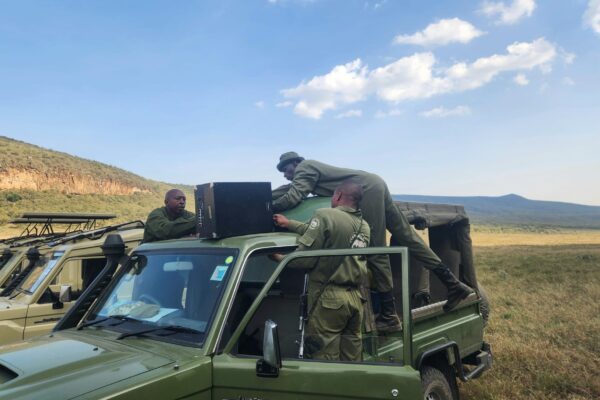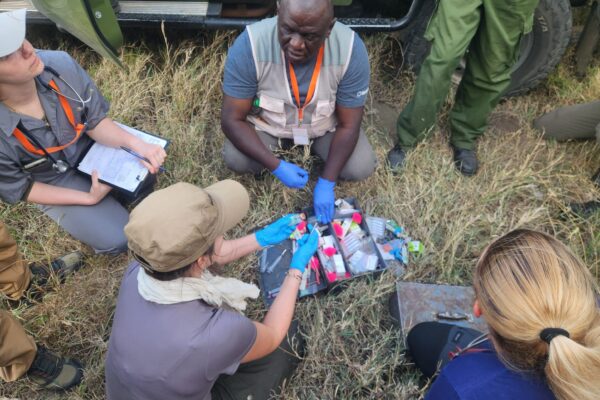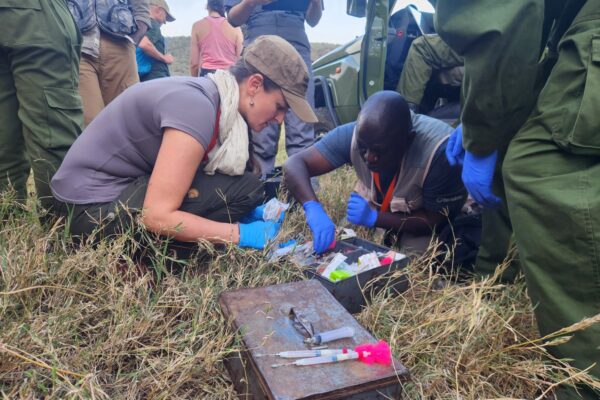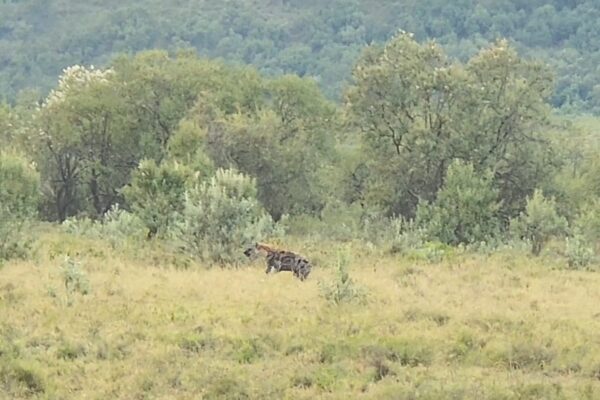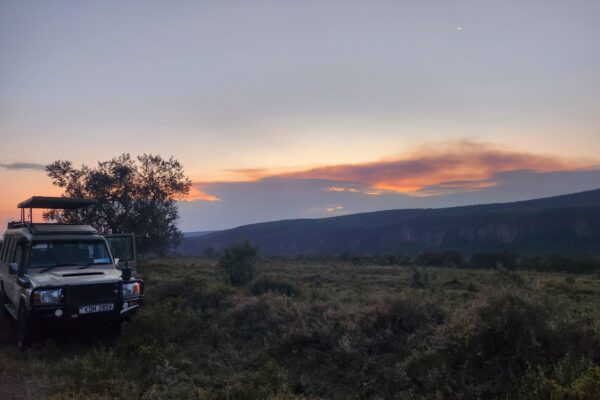
2nd March
by Drs Mercy Chagara and Amy Sledziona
A Day in the Life of a Wildlife Veterinarian Trainee: Observing the Darting and Health Check of a Common Zebra by Mercy
As the sun rises over the savannah, casting a golden glow on the vast landscape, I prepare for an exciting and educational day. Today, I have the incredible opportunity to shadow experienced African wildlife veterinarians as they plan and execute a health check on a common zebra. This experience promises to be both thrilling and informative, offering a unique glimpse into the world of wildlife conservation routine.
Planning the Health Check and Darting
The day begins with a detailed briefing at the veterinary base camp. The lead veterinarian explains the importance of regular health checks for the park’s wildlife population, emphasizing the need for accurate data on the animals’ health status. Because the class is big, we are split into 2 groups i.e. participants and observers. I am on the observer team for this morning’s exercise.
Today’s target is a common zebra, and the team discusses the plan for darting, conducting the health check, and reversing the anaesthetic.
The veterinarians carefully review the equipment needed for the procedure, including the dart gun, tranquilizer darts, anaesthetic drugs, and medical supplies for the health check. Each team member is assigned specific roles, ensuring that the process runs smoothly and efficiently.
The Darting Experience
With the plan in place, we set out in the safari vehicle, navigating the rugged terrain in search of the zebra herd. After some time, we spot a group of zebras grazing peacefully in the distance. The veterinarians identify the target zebra, an adult male and position the vehicle at a safe distance. The lead veterinarian loads the dart gun with a tranquilizer dart and takes careful aim.
The dart flies through the air with a soft thud, hitting the zebra in the left rump. The animal starts to move away but gradually slows down as the tranquilizer takes effect. Within a few minutes, the zebra is lying down, and the team quickly approaches to begin the health check.
Conducting the Health Check
The veterinarians work swiftly but carefully, mindful of the limited time before the anaesthetic begins to wear off. Because the animal had fallen on a sunny spot, the team had to carry the patient to a shade where the health check was to take place.
They performed a thorough examination, checking the zebra’s vital signs, body condition, and dental health and even weighed the patient- a first time for me to see in wildlife setting. Blood samples are collected for further analysis, and an antibiotic blue spray sprayed on the rump for future identification and monitoring.
The team also inspected the zebra for any signs of injury or disease, documenting their findings meticulously. Throughout the process, I observed other students handing over equipment and recording data, gaining valuable hands-on experience under the guidance of the experts.
Reversal of Anaesthetics
Once the health check is complete, the veterinarians administer a reversal agent to counteract the anaesthetic. The zebra begun to stir, and we stepped back to give it space. Within minutes, the zebra is back on its feet, albeit a bit groggy. The team ensured that it safely re-joins the herd before we depart.
Debrief
We gathered for a debriefing session once the patient was determined alright. The team reviewed the data collected during the health check and discussed any notable findings. They also highlighted the importance of collaboration and communication in ensuring the success of such operations.
After this back at the base camp, we were back in class for a short lecture on physical capture techniques using nets and other methods such as boma, mist nets, cages etc. and a lecture on best practice wildlife immobilization of birds. Who knew that you could actually hat (put a hat on head) an ostrich and walk it?? Not me definitely!
For me, this experience has been an eye-opening journey into the world of wildlife veterinary medicine. Observing the dedication and expertise of the veterinarians has deepened my appreciation for the vital role they play in conserving Africa’s wildlife. It has been an unforgettable day, filled with learning, adventure, and a renewed sense of purpose in my chosen career path.
Through such experiences, we can better understand and protect the incredible biodiversity that defines our natural world. As I reflect on the day’s events, I am inspired to continue my journey in wildlife conservation, ready to face the challenges and rewards that lie ahead.
I can’t wait for my team’s participation this afternoon.
Afternoon session written by Amy
This afternoon the IWAH participants, tutors and Kenya Wildlife Service (KWS) travelled to Hell’s Gate for another imbolisation exercise. On this occasion, the plan was to imbolise a male hyena for a health check, morphological data and sample collection. The team prepared the imbolisation drugs and two darts. The KWS team roped up a huge speaker to their truck and blasted out recorded animals calls to attract the hyenas.
The first hyena appeared after half an hour. Unfortunately this hyena would not come close enough to the truck for a reasonable imbolisation attempt. The KWS team directed us to follow them onto a new site.
At the second site, a hyena appeared almost instantly and the KWS team successfully darted the hyena. However, because this site was closer to bushland, the hyena disappeared into the scrub and despite over an hour of dedicated searching by the KWS team, we were unable to locate the hyena. We expect the hyena ran off to safety in the period of time that the sedation from the dart was taking effect and due to the density of the terrain, we could not easily follow his movements. By the time we abandoned our search due to darkness, the sedation would have worn off and he would be staying well away from us.
Although disapppointed that the exercise had not gone as planned and sad for the hyena that his sedation was not of any benefit to him, the team remains positive. These things happen despite our best intentions and we learn from this experience.

